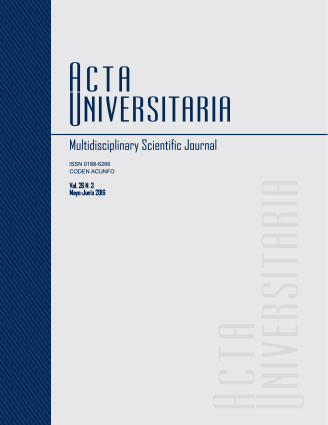Publicado 2016-07-11
Palabras clave
- Green spaces,
- public safety,
- social ecology.
- Áreas verdes,
- seguridad pública,
- ecología social.
Cómo citar
Resumen
Investigaciones recientes indican que las áreas verdes (AV) son importantes para mitigar el fenómeno de la inseguridad pública. Por ello, en el presente trabajo se documenta la aplicación de un Modelo Ecológico Social del impacto de la Naturaleza Urbana Próxima (NUP) en la percepción de seguridad exterior. Mediante un muestreo intencional se efectuaron 120 entrevistas intradomiciliarias (edad promedio 45.73 años, 63 hombres y 57 mujeres) en una comunidad de la Zona Metropolitana del Valle de México (ZMVM). En un protocolo uniforme de evaluación y consentimiento informado, un equipo de observadores y co-observadores evaluaron las variables del modelo: NUP (Escala de Naturaleza en Casa, proximidad de AV exteriores), procesos psicológicos de transacción con el medio ambiente (Escala de Transacciones con la Naturaleza, frecuencia de visita a las AV de la comunidad) y percepción de seguridad exterior (diurna y nocturna). El análisis se llevó a cabo por medio de modelamiento estructural. Se comprobó que: a) la NUP (proximidad de AV) tuvo un efecto positivo sobre la frecuencia de visita a las AV; b) el rol mediador de la variable frecuencia de visita a las AV en la relación de proximidad y percepción de seguridad exterior nocturna; y c) impacto positivo de la NUP en la percepción de seguridad exterior.
Citas
Altman, I. (1975). The environment and social behavior. Monterey, CA: Brooks/Cole.
Appleton, J. (1975). The experience of landscape. London: Wiley.
- doi:10.1016/j.socscimed.2004.06.036
Jeffrey, R. (1971). Crime prevention through environmental design. Beverly Hills, CA: Sage.
Newman, O. (1972). Defensible space. Crime prevention through urban design. London: MacMillan.
Sigma dos México (SIGMA) (2009). Estudios de Mercado. Recuperado de http://www.sigmados.com.mx
Warren, D. (1981). Helping networks. Notre Dame, IN: University of Notre Dame Press.

